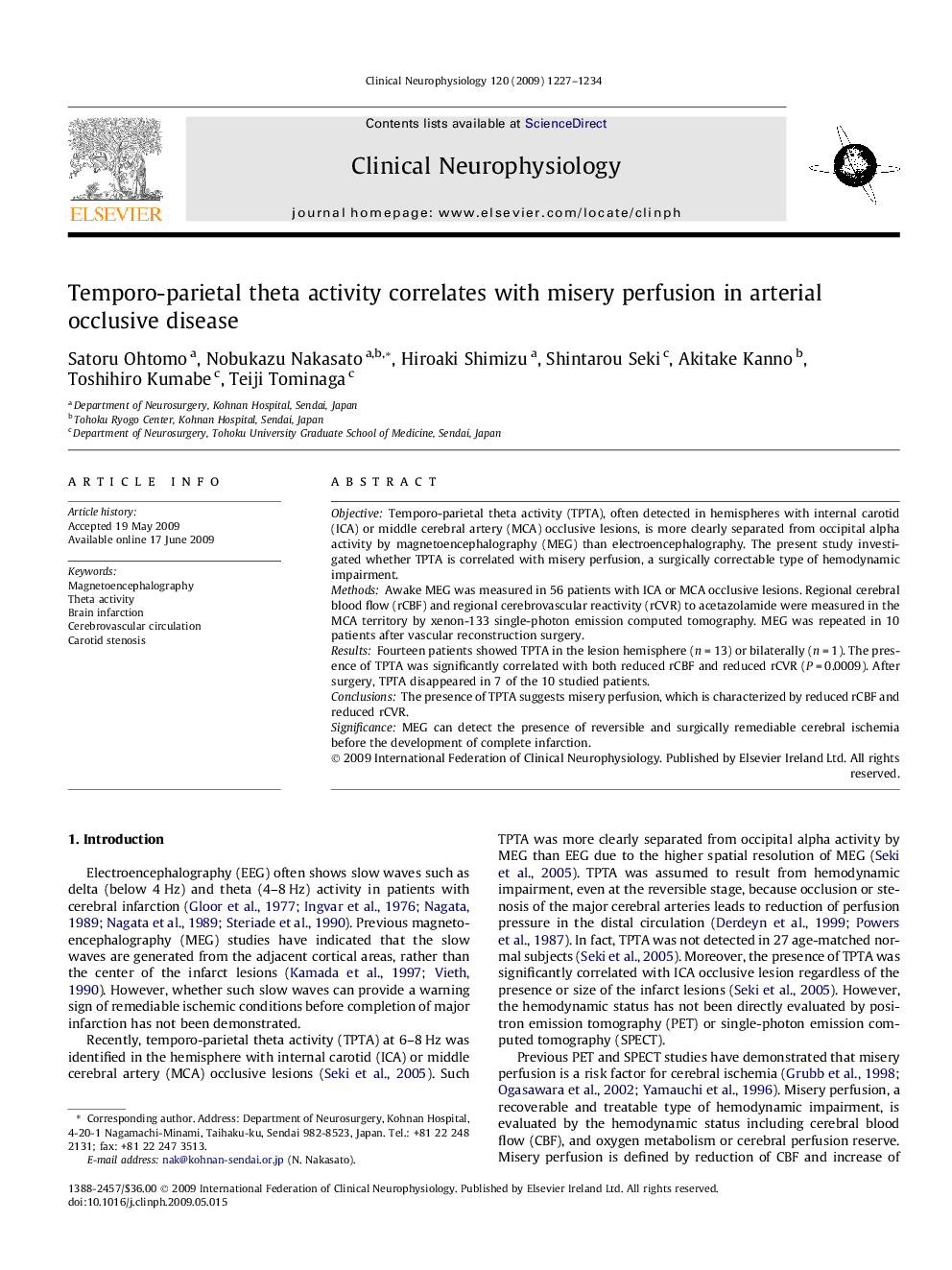| Article ID | Journal | Published Year | Pages | File Type |
|---|---|---|---|---|
| 3046554 | Clinical Neurophysiology | 2009 | 8 Pages |
ObjectiveTemporo-parietal theta activity (TPTA), often detected in hemispheres with internal carotid (ICA) or middle cerebral artery (MCA) occlusive lesions, is more clearly separated from occipital alpha activity by magnetoencephalography (MEG) than electroencephalography. The present study investigated whether TPTA is correlated with misery perfusion, a surgically correctable type of hemodynamic impairment.MethodsAwake MEG was measured in 56 patients with ICA or MCA occlusive lesions. Regional cerebral blood flow (rCBF) and regional cerebrovascular reactivity (rCVR) to acetazolamide were measured in the MCA territory by xenon-133 single-photon emission computed tomography. MEG was repeated in 10 patients after vascular reconstruction surgery.ResultsFourteen patients showed TPTA in the lesion hemisphere (n = 13) or bilaterally (n = 1). The presence of TPTA was significantly correlated with both reduced rCBF and reduced rCVR (P = 0.0009). After surgery, TPTA disappeared in 7 of the 10 studied patients.ConclusionsThe presence of TPTA suggests misery perfusion, which is characterized by reduced rCBF and reduced rCVR.SignificanceMEG can detect the presence of reversible and surgically remediable cerebral ischemia before the development of complete infarction.
